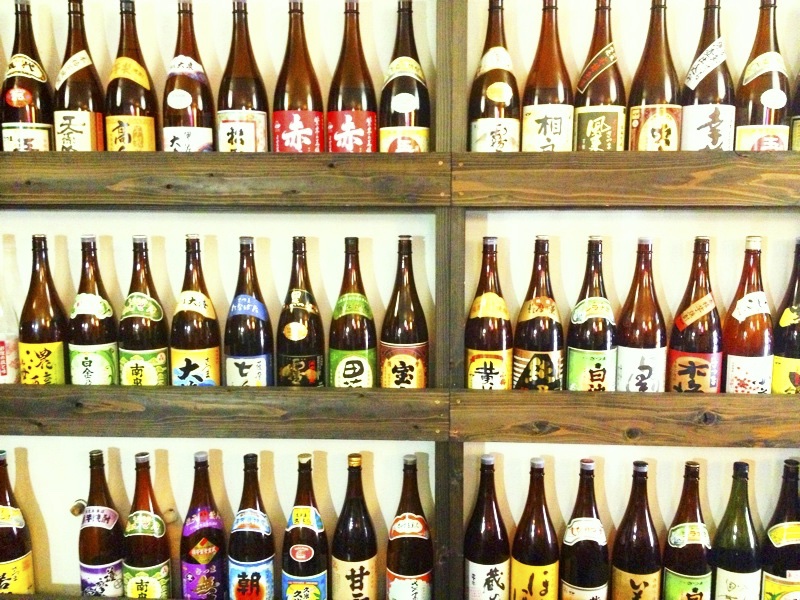I can’t see dead people or bend spoons. Nor am I able to read people’s minds. But, I do possess a sixth sense. While it is not the kind of talent which a person might profit from no matter how sharply it is honed, it amazes friends and family, nevertheless.
In class, I ask a student if his girlfriend has returned from Brazil. He replies that she had, in fact, just come back a few days ago. Another student wonders aloud how I could have known such a thing. I reply that I didn’t. The thought had merely popped into my head and I was only asking out of curiosity.
It’s always like that.
I’m walking in the neighborhood of Momochi one day when I start thinking about Machiko, a girl I taught several years earlier. Her home is nearby, so it isn’t that unusual that my thoughts would turn to her. But then, that train of thought derails and I begin to wonder if her youngest sister—what is her name again—has started junior high school yet, and is she going to Momochi Junior High or some other school when who should I bump into as I turn the corner, but Machiko’s youngest sister—Nana! That’s her name—in a Momochi Junior High School uniform.
One more: I’m passing through the Tenjin underground shopping arcade in Fukuoka City and as I near the Pietro Mio Mio stand, which sells pasta salad in a cup to go, it occurs to me that I have never heard anyone saying they have tried Mio Mio. Wonder if it’s any good, I think to myself. A few minutes later, I emerge from the underground shopping arcade and my thoughts turn to Eiko, a pretty student of mine who if I am not mistaken works in the area. Just as I’m thinking, I wonder where Eiko has lunch—speak of the Devil, Eiko walks by with, lo and behold, a bag of Pietro’s Mio Mio in her hand.
One of my most frequent greetings when I bump into people is: “I was just thinking about you!” I’m afraid they sometimes get the wrong impression, mistakenly believing I had been pining for them or, worse, stalking.
Similarly, I will envision someone falling, and a moment later, right before my very eyes, a woman will stumble down the stairs at the station, or a man will slip on the pavement. This happens so often I sometimes wonder if I am causing the pratfalls.
And so, the other day, I suggested to my wife that we might take our son to the airport to let him watch the planes take off and land.
“He’ll like that,” she replied.
“Oh, and while we’re there,” I said, “let’s pick up some Kasutadon.”
Kasutadon, a custard-filled sponge cake made of Satsuma sweet potatoes, is Japan’s answer to the Twinkie. Unlike the venerable Twinkie, which contains more than twice as many ingredients, Kasutadon will quickly spoil if not refrigerated. The airport happens to be one of the few places in Fukuoka City where the confection is sold. (That was the case in 2011 when I originally wrote this, but not any more!)
Hardly a minute had passed after saying that when the doorbell rang. It was my wife’s mother. The in-laws apparently had just come back from Kagoshima City and were now bearing gifts: a bottle of Tomi no Hōzan imo jōchū and—surprise, surprise—a bag full of Kasutadon.
When my mother-in-law left a few minutes later, I suggested to my wife that while we’re at the airport we also get some gold ingots and bags of cash, as well. Sadly, there were no more visitors or souvenirs to be had.
And that’s the downside of this otherwise extraordinary faculty of mine. I am not able to summon people or things to appear or happen when I’d like them to; I can only vaguely predict their arrival or occurrence a few moments early. Like I’ve said, this is not going to make me rich or famous anytime soon.
Tomi no Hôzan with its gold label, however, does make me feel rich.
富乃宝山
Tomi no Hōzan
A friend who seldom, if ever, drank imo jōchū, introduced me to Tomi no Hōzan. He claimed the brand was the only one he could drink. When I tried it myself, I could understand why.
The pungent sweet potato smell of imo jōchū usually divides drinkers into two camps: those who love it (me for one) and those who are revolted by it. If you belong to the latter, then you owe it to yourself to give Tomi no Hōzan a try.
Produced by Nishi Shuzô (Hioki City, central western Kagoshima Prefecture), Tomi no Hōzan is a premium shōchū made with carefully selected koganesengan (黄金千貫) satsuma sweet potatoes. Frequently described as “fruity”, it can be enjoyed on the rocks, or more preferably mixed with hot or cold water to bring out the bouquet.
Tomi no Hōzan’s fruity bouquet is the result of the use of yellow kōji, the fermentation starter which is normally employed in the brewing of saké. Although yellow kōjiwas at one time used in the production of most shōchū, it was replaced with black or white kōji in the warmer regions of Kyūshū because the temperature sensitivity of the yellow caused the moromi to sour easily during fermentation. Today, yellow kōji is sometimes used to produce certain limited varieties of imo jōchū such as Tomi no Hōzan.
Worth noting: in Kagoshima, drinking at the end of the day with dinner—what is known as banshaku (晩酌) throughout Japan—is called daréyamé (pronounced “daiyamé”) (疲止) in the local dialect, Kagomma-ben. Daré comes from tsukaré (疲れ, fatigue, exhaustion) and yamé from yameru (止め, “stop, end”).
Incidentally, I almost never trust a Monde Selection product, but this one was a good choice.


